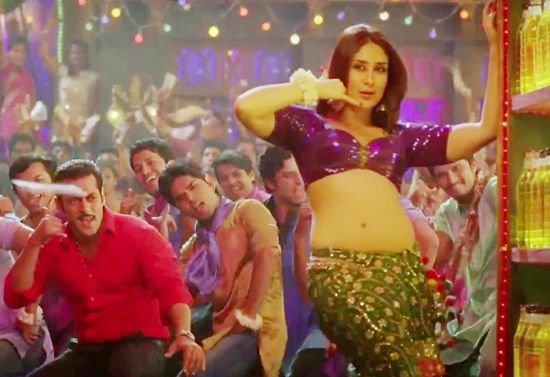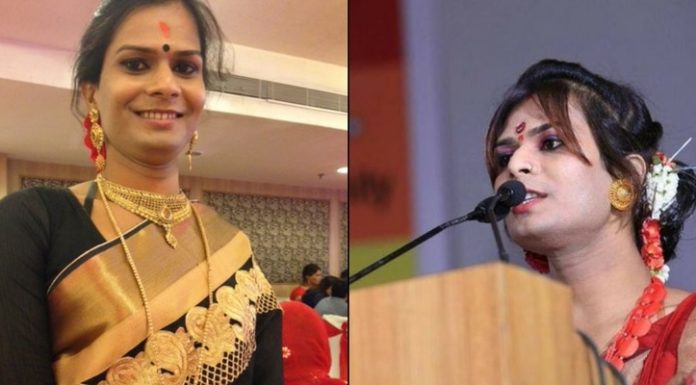The objectification of women in TV and cinema has been a contentious issue for long, not just in developed nations but also in a developing country in India. We talk incessantly about how women are commoditized in popular TV and cinema through item songs.

Image Source : Movie Dabang2
Kareena Kapoor gyrating suggestively in the ‘Fevicol’ video from Dabbang 2 or Rakhi Sawant’s provocative clothes and choreography or Katrina Kaif doing ‘Sheila Ki Jawani’ in skimpy outfits, with a group of men leering at her or groping suggestively, is a matter of great controversy. The public enjoys watching these women with panache, while sociologists and other people decry this phenomenon. And ever since Mahesh Bhatt introduced Sunny Leone in his films, the hypersexualization of women has become the ‘in’ thing. There have been huge debates on the way the camera focuses on women’s chest, waist and hips, and how women are deliberately shown in shower scenes. Not to mention how the women are always fair, size zero and tall and perfect, again enforcing a negative stereotype of the female appearance.
But movies are alone not to be blamed. If they portray women as sexual objects of desire, then TV serials are as subversive. Decking women up in heavy jewelry, make-up and saris, they show them as props in the typical saas-bahu sagas that millions of housewives in India watch every evening in their homes. Women are written by Hind soap-opera writers as meek, docile slaves of their husbands and mom-in-laws.
So how can cinema and TV be more gender-sensitive? Can we stop this degradation of women in popular consumerist culture?
- Try to write women characters as something more than just the male actor’s moll: Script-writers must try to give women actors powerful roles in a movie. They must not exist purely as a prop in the plot, or as a sidekick for the hero to romance. Make them a flesh-and-blood person with agency and will of their own.
- Fairness ads: This is one of the most subversive and racist phenomena on TV- ads where dark women are shown as inadequate and pariahs. And then they apply Fair & Lovely and suddenly they are in-demand and successful. Some fairness ads show dark women as being ineligible for marriage- but the moment they dab a fairness cream and their skin lightens, they become the ideal daughter-in-law. This is a negative portrayal of dark-skinned women and perpetuates wrong stereotypes.
- Size-zero women: Both in movies and films, women should not always be shown as lithe and lissome and perfectly proportioned, with full bosoms and thin waists. Fat women are caricatured and mocked in films and TV on a regular basis- they seem to exist for that sole reason. This should be put to an end. Body-shaming of plump or overweight women is wrong and deplorable. A more broad-minded approach can be taken, where women of all shapes and sizes are equal.
- Saas-bahu serials: Writers of Hindi soap operas must stop portraying women as subservient creatures, always at the beck and call of their husbands and mother-in-laws, clad in a sari and heads covered with a pallu; their sole aims being looking good, cooking and cleaning and pleasing their husbands. Stop glamorizing this regressive portrayal and perception of women.
- Female POV: Script-writers of serials and movies must have strong female characters, with a mind of their own. Their perspective must be incorporated in the story.
- Women-centric films and serials: The Hindi film industry and TV industry must encourage more films and shows like Kahani, Queen and Dirty Picture, which are centered on strong women characters. This will help improve the general perception about women as thinking, independent beings.
- Less item songs: In continuation of the earlier point, item songs with skimpily clad women gyrating provocatively to beats in front of leering men should be less, and avoided altogether if possible. Hyper-sexualization of women should be condemned and lessened- women should exist as something more than sex objects in a movie.
- Portrayal of sexual violence: One of the biggest problems in Hindi cinema is how rape and molestation scenes are portrayed- they are shown in a way to titillate and excite, rather than horrify. Sexual violence is glamorized to the point where the audience has been completely desensitized to gender violence- even that which happens in real life. Audiences cheering to Ranjit or Shakti Kapoor raping a nubile woman on screen is a disturbing phenomenon. There is nothing delightful about molestation, eve-teasing or rape. It’s deplorable and that’s the way it should be shown.
- Stalking must not be glamorized either: In most movies, it is shown how the hero stalks the heroine till she gives in to his desires. Entire songs are shot around a man chasing a woman, even dancing on the roads and touching him in public till she gives in. In a real world scenario, this would be a crime. Stalking is in no way related to romance or love. This also shows how female consent is portrayed in a skewed manner- she’ll be bullied and cajoled into submission by the hero because that’s what passes for wooing. She doesn’t get to say no or put forward her terms for the relationship. This trend needs to change- stalking should never be a substitute for wooing a woman.
- Sensitivity on comedy shows: There should be unanimous condemnation of comedians like Kapil Sharma mocking overweight women on his shows and passing sexist comments on women’s clothes and lifestyles. It’s disturbing that we find the caricature of ‘Palak’ as an overweight woman who is mocked for her love of food and her food binges, as hilarious. This should stop as soon as possible, and more respect for women who are not physically perfect be brought into the script.
Television and cinema haven’t taken upon the mantle of social responsibility, but they have mass appeal. A wide cross section of the public watches both and gets influenced. What we see daily on TV and in films informs our attitudes and behaviors- so positive, less sexualized and more tasteful portrayal of women would help a long way in positive perception of women in society.































The article, though short is very impressive. I think it should be translated at least into Hindi and be circulated. The appropriate day is women’s day or even some other occasion.